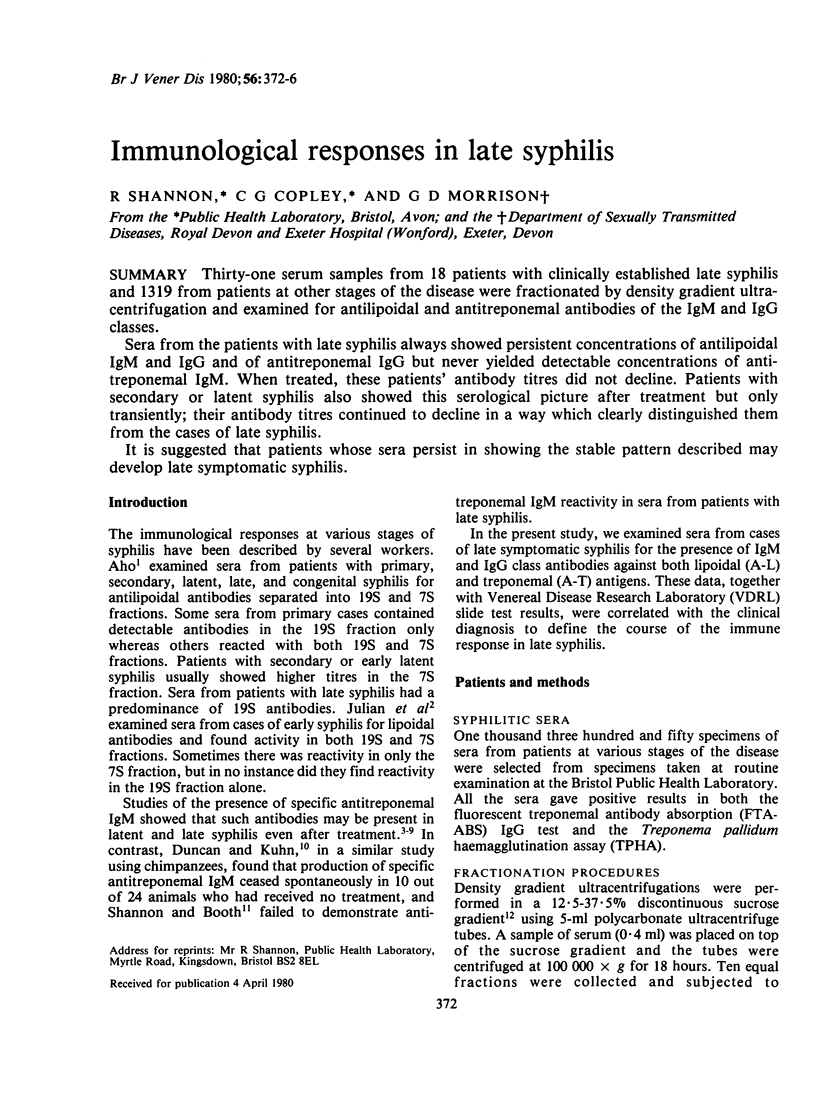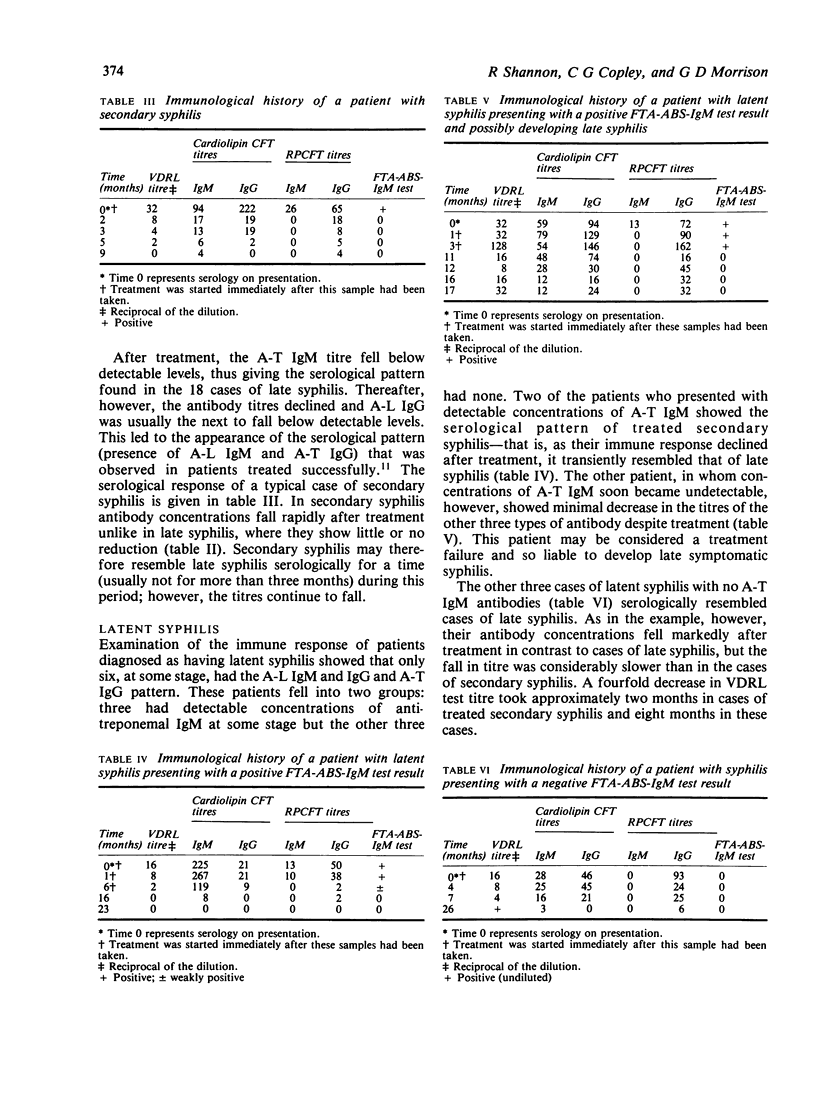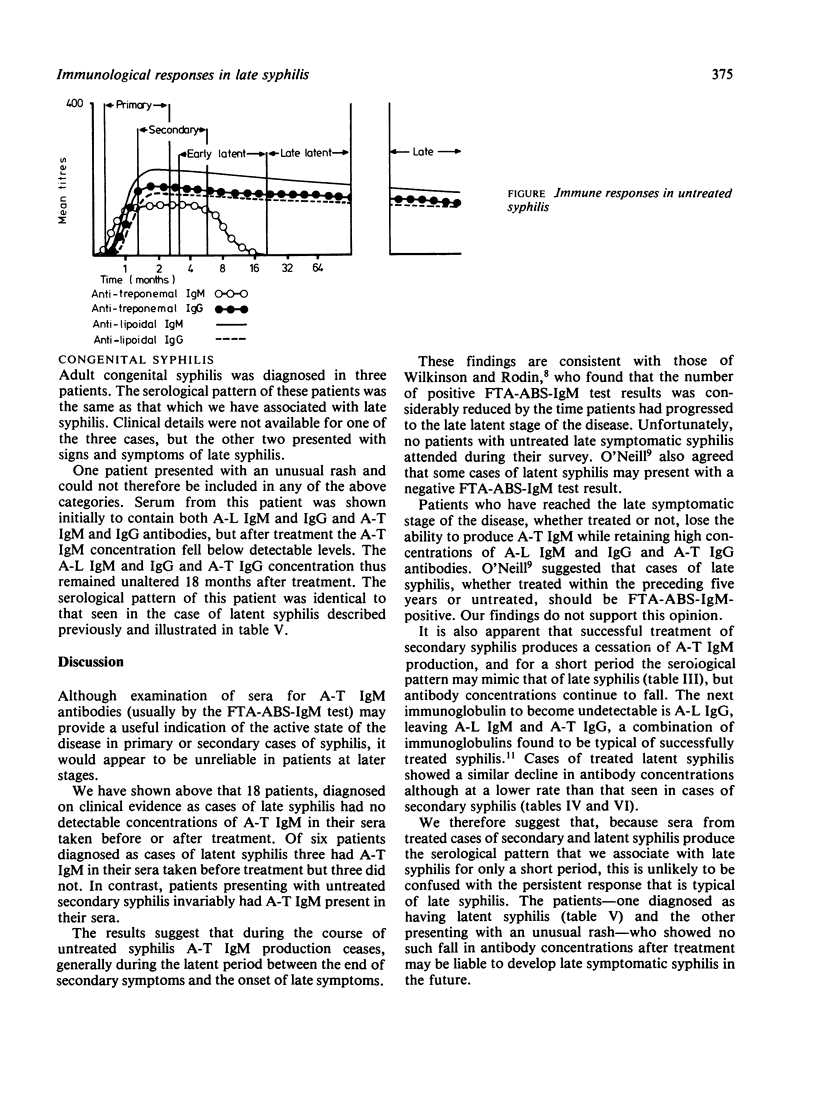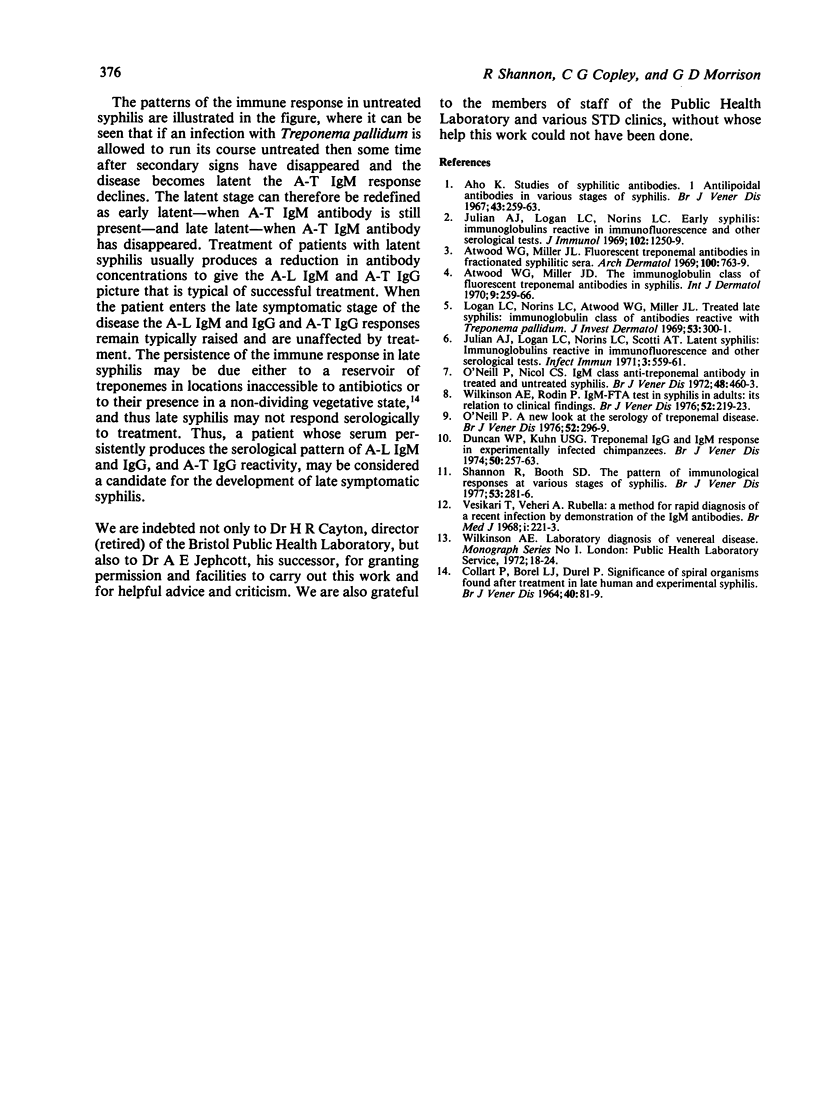Abstract
Thirty-one serum samples from 18 patients with clinically established late syphilis and 1319 from patients at other stages of the disease were fractionated by density gradient ultracentrifugation and examined for antilipoidal and antitreponemal antibodies of the IgM and IgG classes. Sera from the patients with late syphilis always showed persistent concentrations of antilipoidal IgM and IgG and of antitreponemal IgG but never yielded detectable concentrations of antitreponemal IgM. When treated, these patients' antibody titres did not decline. Patients with secondary or latent syphilis also showed this serological picture after treatment but only transiently; their antibody titres continued to decline in a way which clearly distinguished them from the cases of late syphilis. It is suggested that patients whose sera persist in showing the stable pattern described may develop late symptomatic syphilis.
Full text
PDF




Selected References
These references are in PubMed. This may not be the complete list of references from this article.
- Aho K. Studies of syphilitic antibodies. I. Anti-lipoidal antibodies in various stages of syphilis. Br J Vener Dis. 1967 Dec;43(4):259–263. doi: 10.1136/sti.43.4.259. [DOI] [PMC free article] [PubMed] [Google Scholar]
- Atwood W. G., Miller J. L. Fluorescent treponemal antibodies in fractionated syphilitic sera. The immunoglobulin class. Arch Dermatol. 1969 Dec;100(6):763–769. [PubMed] [Google Scholar]
- Atwood W. G., Miller J. L. The immunoglobulin class of fluorescent treponemal antibodies in syphilis. Int J Dermatol. 1970 Oct-Dec;9(4):259–266. doi: 10.1111/j.1365-4362.1970.tb04739.x. [DOI] [PubMed] [Google Scholar]
- COLLART P., BOREL L. J., DUREL P. SIGNIFICANCE OF SPIRAL ORGANISMS FOUND, AFTER TREATMENT, IN LATE HUMAN AND EXPERIMENTAL SYPHILIS. Br J Vener Dis. 1964 Jun;40:81–89. doi: 10.1136/sti.40.2.81. [DOI] [PMC free article] [PubMed] [Google Scholar]
- Duncan W. P., Kuhn U. S., 3rd Treponemal IgG and IgM response in experimentally infected chimpanzees. Br J Vener Dis. 1974 Aug;50(4):257–263. doi: 10.1136/sti.50.4.257. [DOI] [PMC free article] [PubMed] [Google Scholar]
- Julian A. J., Logan L. C., Norins L. C. Early syphilis: immunoglobulins reactive in immunofluorescence and other serologic tests. J Immunol. 1969 May;102(5):1250–1259. [PubMed] [Google Scholar]
- Julian A. J., Logan L. C., Norins L. C., Scotti A. T. Latent syphilis: immunoglobulins reactive in immunofluorescence and other serological tests. Infect Immun. 1971 Apr;3(4):559–561. doi: 10.1128/iai.3.4.559-561.1971. [DOI] [PMC free article] [PubMed] [Google Scholar]
- Logan L. C., Norins L. C., Atwood W. G., Miller J. L. Treated late syphilis: immunoglobulin class of antibodies reactive with Treponema pallidum. J Invest Dermatol. 1969 Oct;53(4):300–301. doi: 10.1038/jid.1969.151. [DOI] [PubMed] [Google Scholar]
- O'Neill P. A new look at the serology of treponemal disease. Br J Vener Dis. 1976 Oct;52(5):296–299. doi: 10.1136/sti.52.5.296. [DOI] [PMC free article] [PubMed] [Google Scholar]
- O'Neill P., Nicol C. S. IgM class antitreponemal antibody in treated and untreated syphilis. Br J Vener Dis. 1972 Dec;48(6):460–463. doi: 10.1136/sti.48.6.460. [DOI] [PMC free article] [PubMed] [Google Scholar]
- Shannon R., Booth S. D. The pattern of immunological responses at various stages of syphilis. Br J Vener Dis. 1977 Oct;53(5):281–286. doi: 10.1136/sti.53.5.281. [DOI] [PMC free article] [PubMed] [Google Scholar]
- Vesikari T., Vaheri A. Rubella: a method for rapid diagnosis of a recent infection by demonstration of the IgM antibodies. Br Med J. 1968 Jan 27;1(5586):221–223. doi: 10.1136/bmj.1.5586.221. [DOI] [PMC free article] [PubMed] [Google Scholar]
- Wilkinson A. E., Rodin P. IgM-FTA test in syphilis in adults. Its relation to clinical findings. Br J Vener Dis. 1976 Aug;52(4):219–223. doi: 10.1136/sti.52.4.219. [DOI] [PMC free article] [PubMed] [Google Scholar]


